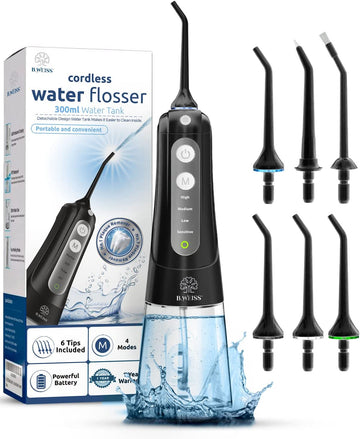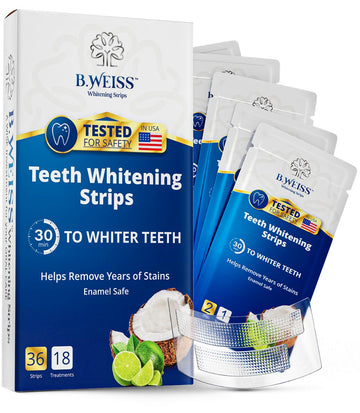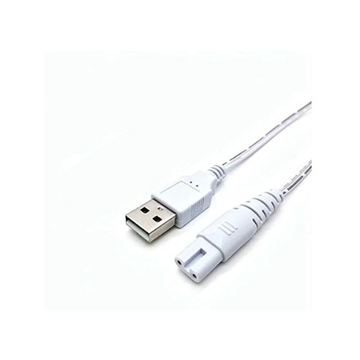Cheapest Ways To Remove Nicotine Stains On Teeth
A cost-effective method to remove nicotine stains on teeth is by using a water flosser. The targeted stream of water helps clean and minimize stains, providing an affordable solution for maintaining a brighter smile.
You might be wondering why you have teeth stains and you often blame it on sugary or acidic food that you consume. But the truth is that if you are a smoker, the nicotine from the cigarette is the reason why you got yellow stains on your teeth. People who are fond of smoking already know that it has harmful effects on their lungs but smoking can also damage your gums resulting in serious gum diseases. Plus, when nicotine stains on teeth are not removed it will lead to cavities that damage your overall oral health.
What Do Nicotine Stains Look Like?
You will know if you have nicotine stains on your teeth if their color changes from white to yellowish or brownish. Nicotine is colorless when used in tobacco products but when it is combined with oxygen it will result in teeth with yellow stains. When not attended, it becomes cavities or tooth decay that will make the color of your teeth brown or black.

Are Nicotine Stains on Teeth Permanent?
Nicotine stains on teeth are not permanent but it is very difficult to remove. This is because the nicotine has been on your teeth for years and it already sticks to the enamel which is the only layer or barrier that protects your teeth from any tooth cavities or sensitivity. Good thing it can still be removed with the use of dental tools, tooth whitening products, and other oral care routines that you have to enforce without going to the dentist. Check out the list of products that you can make at home or buy at very low prices for teeth stain removal below!
How to Remove Nicotine Stains?
Brush with Baking Soda Toothpaste
Baking soda is one of the most widely used ingredients in toothpaste because its effectiveness in teeth whitening is very high. The best thing about baking soda is that it is the cheapest way to whiten teeth with yellow stains caused by nicotine from tobacco products too. It is a natural abrasive that removes any plaque and stains for your teeth to become whiter again. There is no doubt about its effectiveness and its safety because baking soda has antibacterial properties to ensure that your mouth is virus-free.
There are a lot of baking soda toothpastes available in the grocery store but if you really want the cheapest way to do this, you just need to get your stock of baking soda in your cabinet and a small amount of water to make your own toothpaste. You can check the instructions below for your reference.

How to Make Baking Soda Toothpaste
- In a bowl, mix 2 tablespoons of baking soda and 2 tablespoons of water.
- Use a spoon to mix it well until you form a paste.
- Gently brush your teeth using the baking soda paste for 2-3 minutes. (Make sure that all your teeth are coated with baking soda.)
- Rinse your mouth thoroughly with water.
Baking soda toothpaste is very effective in removing nicotine stains on teeth but it is not advisable to use it every day. Baking soda is totally different from other toothpaste that has ingredients that protect your teeth from cavities. So, we advise you to use it twice a week, in order to whiten your teeth. Remember that baking soda is not the ideal toothpaste that protects your overall oral health.
Use Hydrogen Peroxide
To remove teeth stains right away with just minimal spending, use hydrogen peroxide. It can remove nicotine stains from your teeth because it can effectively reduce complex molecules in your teeth. When these molecules are reduced, the stains and plaque in your teeth will be eradicated. You can expect your teeth to get whitened in just 2 days because hydrogen peroxide contains high concentrations that could also damage teeth when used often. Researchers advised that hydrogen peroxide is only safe and effective if you follow the recommended dosage and instructions from the manufacturer.
You can buy hydrogen peroxide and turn it into toothpaste or an oral rinse. You can choose which one works for your teeth stains removal. Follow the instructions or steps below, so you can easily make one at home.
Instructions (Hydrogen Peroxide Toothpaste)
- In a bowl, mix a small amount of low-concentration hydrogen peroxide, a few drops of peppermint, 1 teaspoon of sea salt, and 3 teaspoons of baking soda.
- Use a spoon to mix it well until you form a paste.
- Gently brush your teeth using the baking soda paste for 2-3 minutes. (Make sure that all your teeth are coated with baking soda.)
- Let the paste sit in your teeth for 2 minutes after brushing.
- Rinse your mouth thoroughly with water.
Instructions (Hydrogen Peroxide Mouthwash)
- Pour 3 ounces of water into a cup.
- Combine two drops of low-concentration hydrogen peroxide into the water.
- Mix all ingredients.
- Take a mouthful of the mixture and swish it around your mouth for 30-60 seconds.
- Spit out the mixture afterward.
Brush with Blue Covarine Toothpaste
The type of toothpaste you use in brushing your teeth plays a big role in teeth stain removal. You just can’t pick a toothpaste that you think works best for you because of its cooling effect in your mouth. Make it a habit to always check the ingredients so you will know if it includes the ones that are best for nicotine stains on teeth. According to a study conducted by dental professionals, toothpaste with blue covarine as its ingredient is the best teeth-whitening toothpaste ingredient among many others like microbeads and charcoal toothpaste.

If you are not familiar with blue covarine, it serves as the blue pigment that is distributed on the surface of your teeth, removing the nicotine stain and making your teeth whiter. You don’t have to worry about finding toothpaste with blue covarine because most of the toothpaste sold in the market contains blue covarine. You can check the label of the ingredients because it is indicated there. Moreover, unlike baking soda and hydrogen peroxide toothpaste which is somehow harmful because of their high concentration, with blue covarine you can safely use it twice a day to get the best results in just weeks.
Get a Water Flosser
Flossing is a big part of your dental routine to keep your teeth white and your gums protected from any diseases. The same with nicotine stains, they can also be removed with the use of a water flosser. It’s like a handy tool that you can use right away after you smoke, to ensure that the nicotine stain is removed and will no longer reside in your teeth.
You don’t have to be confused about whether you should use a water flosser and string floss because string floss is not that effective with regard to teeth stain removal. String floss can only be used in removing the food debris stuck in your teeth but the nicotine stains on teeth can’t be removed, unlike water flosser.
B. Weiss water flosser is easy to use too, you just have to let the water stream and it will do its wonders automatically to remove teeth stains caused by smoking. It can clean your teeth and remove nicotine stains as deep as 6 mm, this is something that other dental tools can’t do. Moreover, according to a dental study, when a water flosser is used together with a manual toothbrush, they remove significantly more plaque from tooth surfaces than mere tooth brushing itself. Here is the guide below for using a water flosser for teeth stains removal.

Steps in Using Water Flosser
- Fill the reservoir with warm water before placing it on the base.
- Water flossers come with different tips so choose the one that you favored the most.
- Click the tip on the handle.
- Turn on the water flosser and set the control dial too high to let the water flow. (The next time you will use it, you can set the control dial to any type of pressure you want.)
- In a sink, you have to lean over so that the water won’t stream down to your clothes.
- Place the tip at the gumline and let the water flow to clean each tooth.
- Move it from one gum to another.
- Once you have finished flossing your teeth, turn the water flosser off and remove the tip.
Are you still confused about how to use a water flosser? You can also check out the video demonstration below.
Rinse with Coconut Oil
Oral rinse or mouthwash is very important in maintaining your oral health. Oral rinse is never a good alternative for brushing and flossing but it can add some protection such as killing bacteria in your mouth. However, some oral rinse sold in the market today has alcohol that can kill the bad bacteria as well as the good bacteria. The good bacteria in your mouth help maintain the pH balance in your mouth so if it is also eradicated, you can’t totally achieve a healthy mouth that is free of nicotine stains.
Good thing medical researchers have found the best oral rinse to remove nicotine stains on teeth without killing the good bacteria. Coconut oil is surprisingly the most effective oral rinse solution because it pulls the bad bacteria from your oral cavity that feeds on the nicotine in your teeth, turning it into plaque or worst cavities. You have to make your own coconut oil mouthwash because you can rarely buy mouthwashes that use coconut oil as their ingredient.

- Gargle 1-2 tablespoons of coconut oil for 10-15 minutes.
- Swish the oil in your mouth back and forth to pull the bacteria off your teeth.
- Spit out the coconut oil and rinse your mouth with water.
- You can also choose to brush your teeth if you don’t like the taste of the oil sitting in your mouth.
Consider Lemon Juice Extract
This is probably the cheapest way for teeth with yellow stains caused by nicotine. Lemons as a fruit which are a good source of vitamin C can effectively remove teeth stains. It has a high acid level like other citrus fruits that are best for whitening teeth. As you have noticed, lemons are also used as a cleaning agent because of their bleaching properties.
However, you need to limit the use of lemon extract in your teeth because too much of it can damage your enamel. Remember that the enamel of your teeth is important because it is the only layer that covers or protects your teeth from any further damage. If your enamel weakens, you will not only be prone to nicotine stains but also to other mouth problems such as cavities and tooth sensitivity. So, make sure that you use lemon as a toothpaste once or twice a week only, depending on the number of nicotine stains on your teeth you want to remove.
How to Use Lemon as a Toothpaste
- Extract the juice of the lemon and pour it into a small bowl.
- Rinse your toothbrush and dip it into lemon juice.
- Gently rub it on your teeth.
- Let it sit in your mouth for 2-3 minutes.
- Rinse your mouth with water afterward.
Apply Whitening Strips
Teeth stains removal can be easy if you apply whitening strips to your teeth. In this way, you don’t have to be worried about your teeth looking yellowish because of the nicotine because whitening strips last for about 6 months.
The B. Weiss whitening strips are formulated with medical and natural ingredients to reduce sensitivity and provide a more comfortable teeth whitening experience. Our product uses hydrogen peroxide as its active ingredient, which has been clinically proven to be effective in whitening teeth. In addition, we use other natural ingredients such as glycerin and xylitol to help reduce sensitivity and promote oral health.

With just three simple steps – peel, apply, and reveal – you can have whiter teeth in no time. There’s no need to wait around for hours or even days for your teeth to whiten. You can simply peel off the strip, apply it to your teeth, and then relax for 30 minutes while it does its job. After that, you’ll be able to see a noticeable difference in your smile. So if you’re looking for an easy and convenient way to get whiter teeth, look no further than B. Weiss whitening strips!
Use Fluoridated Water
Fluoride is often used as an ingredient in toothpaste to protect your overall health. The good news is that fluoride can also be consumed because it is one of the minerals that compose water. Fluoride will serve as the protection of your teeth against nicotine if you are a heavy smoker. You can also choose to buy fluoridated toothpaste because it is considered the most important therapeutic substance used in toothpaste according to a dental study. It has no side effects unlike any other ingredients combined in toothpaste.

The difference between fluoride toothpaste and fluoride water is that the water can be consumed. When the fluoride is ingested, it can be absorbed by your teeth even the ones that are harder to reach when brushed are protected. So, in order to protect your teeth from nicotine stains and any other bacteria build-up, you have to make sure that the water you drink every day is made up of fluoride. If you don’t have plans on buying fluoridated bottled water, you can ask your water supplier about the fluoride levels or the water.
Conclusion
You no longer have to ask how to remove nicotine stains because you already know the cheapest ways to effectively eliminate your teeth problem. Stay patient as you start to execute the plan you have chosen for your teeth stains. Remember that nicotine stains are harder to eradicate than other causes of stains in your teeth. So, don’t expect better results if you don’t make every procedure a devotion that you have to undertake.
You may also want to check out the best whitening toothpaste of all time for your teeth to be fully protected not just from nicotine stains but also from any other tartar and plaque build-up!
Disclaimer:
The content in this article is for informational purposes only and is not a substitute for professional medical advice. Always consult with a healthcare provider before making any changes to your health regimen. The author and publisher do not take responsibility for any consequences resulting from the information provided in this article.





